- Family Style by Pepper
- Posts
- Your Slow Cooker Is Lying To You
Your Slow Cooker Is Lying To You
How to hack the "set it and forget it game" so it looks like you tried wayyyy harder than you actually did

It's finally November. The air is cold, the sun sets at 4:47 PM (probably), and all you want is to eat something warm and cozy with your family after a long days work. That said, with Thanksgiving right around the corner, holiday chaos ramping up, and the days feeling unbearably short, the last thing you want to do is stand over a stove for hours making it.
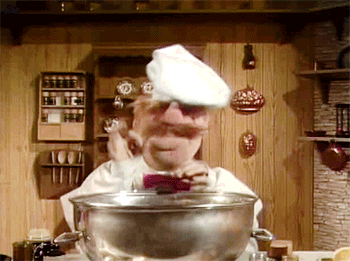
Enter: Slow Cooker Season
Crock-Pots worldwide wait for this…their moment in the (ever-setting) sun…their time to shine; to prove heroic in the battle against the greatest illness infecting us all this time of year; the flu I Don’t Wanna-itis 🤢
They’re not as straightforward and one size fits all as they seem, though. Everyone buys them with big dreams ("Set it and forget it!" they said), but it often takes a few tries (years) until you hack their formula enough to see them solve the big problems. So this week, we’re talking all things slow cooking to leave your house smelling amazing all day (and have cleanup limited to one pot instead of seven…teen).
TLDR:
Crock-Pots save you:
Time: 6 hours while you're doing literally anything else
Money: Saves money on tough (cheap) cuts of meat
Effort: Easier than it seems once you know the rules
🌶️ While I have YOU here, what do YOU Pepper members want to be called?! 🌶️ |
Why "Low and Slow" Is Actually a Thing (According to Science)

Growing up I was always the annoying kid asking “why?” so please humor me with a speed round of food science.
Slow cookers operate between 190°F and 210°F, depending on whether you've got it on low (190-200°F) or high (200-210°F). For reference, water boils at 212°F, and your oven on its lowest setting is probably around 170-200°F.
This temperature range is perfect for breaking down collagen (the tough, chewy connective tissue in meat) into gelatin, which is soft and gives you that "fall-apart tender" texture everyone loves. This process takes time. You can't rush it. The collagen molecules need hours at steady, gentle heat to break down properly.
The bottom line is that slow cookers are incredible at making tough things tender. They're just not great at cooking delicate things gently.
A Brief History of the Slow Cooker (Because It's Actually Interesting)
The slow cooker was invented in 1936 by a guy named Irving Naxon, who wanted to recreate his grandmother's Lithuanian cholent; a stew that cooked overnight for the Sabbath. He called it the "Naxon Beanery All-Purpose Cooker."

Nobody cared about it for decades.
Then in 1971, Rival Manufacturing bought the patent, renamed it the "Crock-Pot," and marketed it to working women as the solution to getting dinner on the table. The timing was perfect. Women were entering the workforce in huge numbers, and frozen TV dinners were the main competition. A hot, home-cooked meal that required 15 minutes of morning prep was revolutionary.
By 1975, Rival was selling Crock-Pots faster than they could make them. Every household had one. It became the icon of 1970s cooking.
A few years later it feels like everyone suddenly turned on them though. Slow cookers got a reputation for making bland, mushy food. Partly because many of the recipes from that era were…bad, but also partly because people threw everything in raw and expected magic.
The slow cooker quickly became uncool.
Then the internet happened. Then Pinterest. Then TikTok. Now Pepper!
Food bloggers and content creators started sharing recipes and making slow cooking trendy again. Instant Pot released a combination pressure cooker/slow cooker in 2010 and sold millions.
Now we're in the golden age of slow cooker recipes. We have better ingredients, we understand how to layer flavors, and we know you need to brown the meat first!
How To Use Your Slow Cooker
What to put in:
Tough cuts of meat: Chuck roast, pork shoulder, beef short ribs, lamb shanks, chicken thighs (not breasts). These cuts have collagen and fat. They need long cooking. They're also the cheapest cuts, which is why slow cookers save you money.
Bean-based dishes: Chili, bean soup, cassoulet. Dried beans need hours to soften (just soak them first).
Braised dishes: Anything that traditionally cooks in liquid for hours. Pot roast, beef stew, carnitas, pulled pork.
Soups and stocks: The gentle simmer extracts flavor without evaporating too much liquid. Your house smells amazing all day.
Breakfast situations: Overnight oats, steel-cut oatmeal, breakfast casseroles. Set it before bed, wake up to breakfast.
What not to put in:
Lean proteins: Chicken breasts, pork tenderloin, fish. They dry out even in liquid because the proteins tighten and squeeze out moisture. If you must use chicken breasts, add them in the last 2-3 hours, not the full 8.
Pasta: Turns to mush if it cooks too long.
Dairy: Milk, cream, cheese. They curdle or separate when cooked for hours. Add them in the last 30 minutes, or use evaporated milk (it's more stable).
Delicate vegetables: Zucchini, spinach, fresh tomatoes. They disintegrate. Add these at the end.
Rice: Sometimes works, often doesn't. Rice absorbs liquid unpredictably in slow cookers.
Anything you want crispy: Physics says no. Everything steams in there. You're not getting crispy skin or caramelization. If you want crispy, finish it under the broiler or in a hot pan.
The high vs. low debate:
High and low on a slow cooker aren't that different temperature-wise (maybe 10-15 degrees). The main difference is how fast the cooker reaches temperature. High hits the target temp in about an hour. Low takes 2-3 hours to get there.
For tough cuts that need lots of time, low is better. The slower rise gives collagen more time to break down gradually.
For things that cook quickly anyway like a soup or chili, high works fine. You're just warming everything up and melding flavors.
Three Recipes That the Pepper Community Comes Back to Over and Over
This is the slow cooker's reason for existing. This is what it was born to do. This is the meal that makes your house smell like a Norman Rockwell painting come to life.
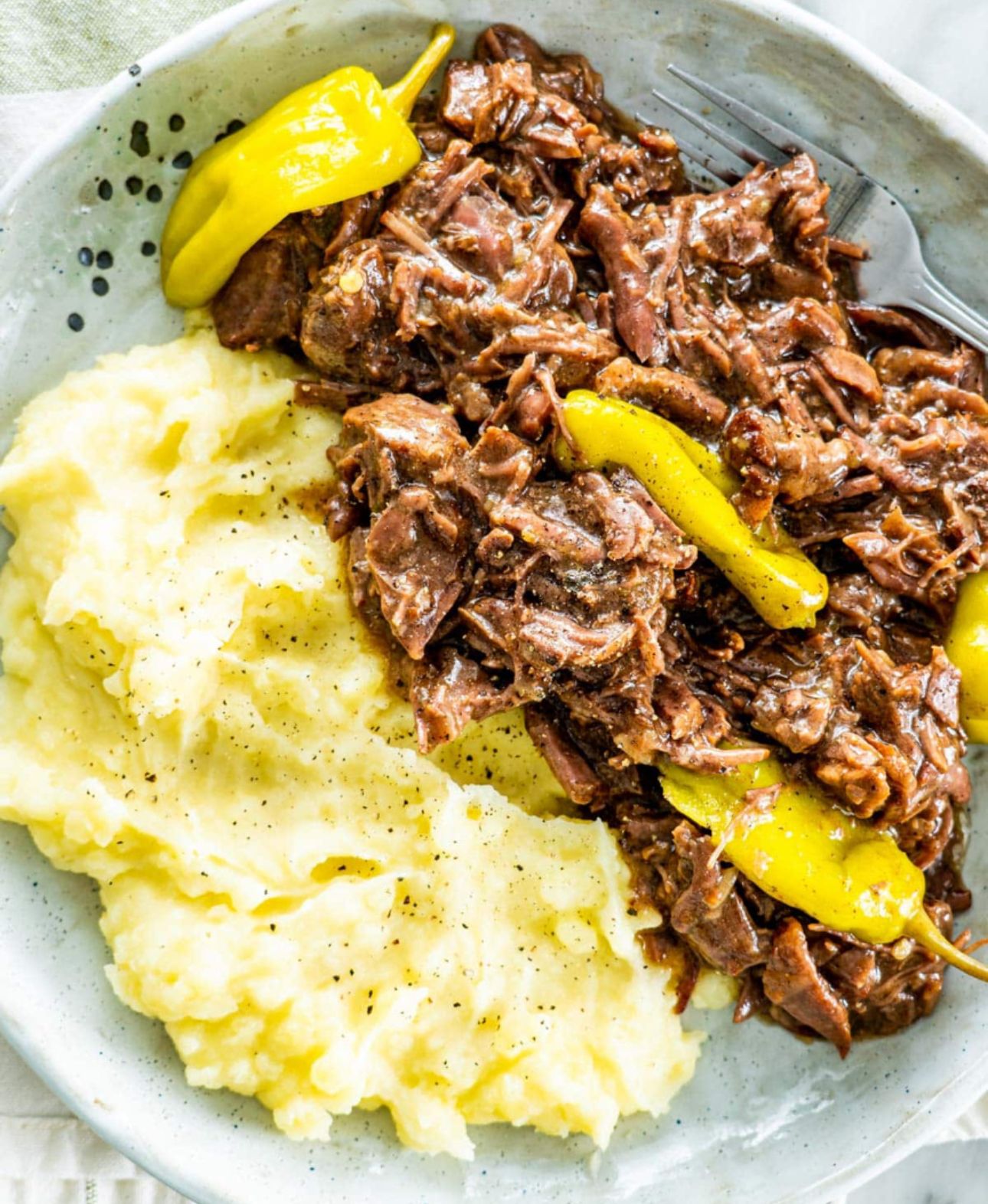
@EmmaTaunton
Chuck roast is heavily marbled with fat and connective tissue. After 8 hours at low heat, that collagen breaks down into gelatin, the fat renders, and you're left with meat so tender it falls apart when you look at it. The vegetables absorb all that flavor from the braising liquid.
Tip: The first time I skipped browning the meat to save time. The roast was tender but tasted flat. Browning adds 10 minutes of work but doubles the flavor.
This is what to make when you need something that looks impressive but is silly easy. It's perfect for those November nights when you want something warming and hearty.
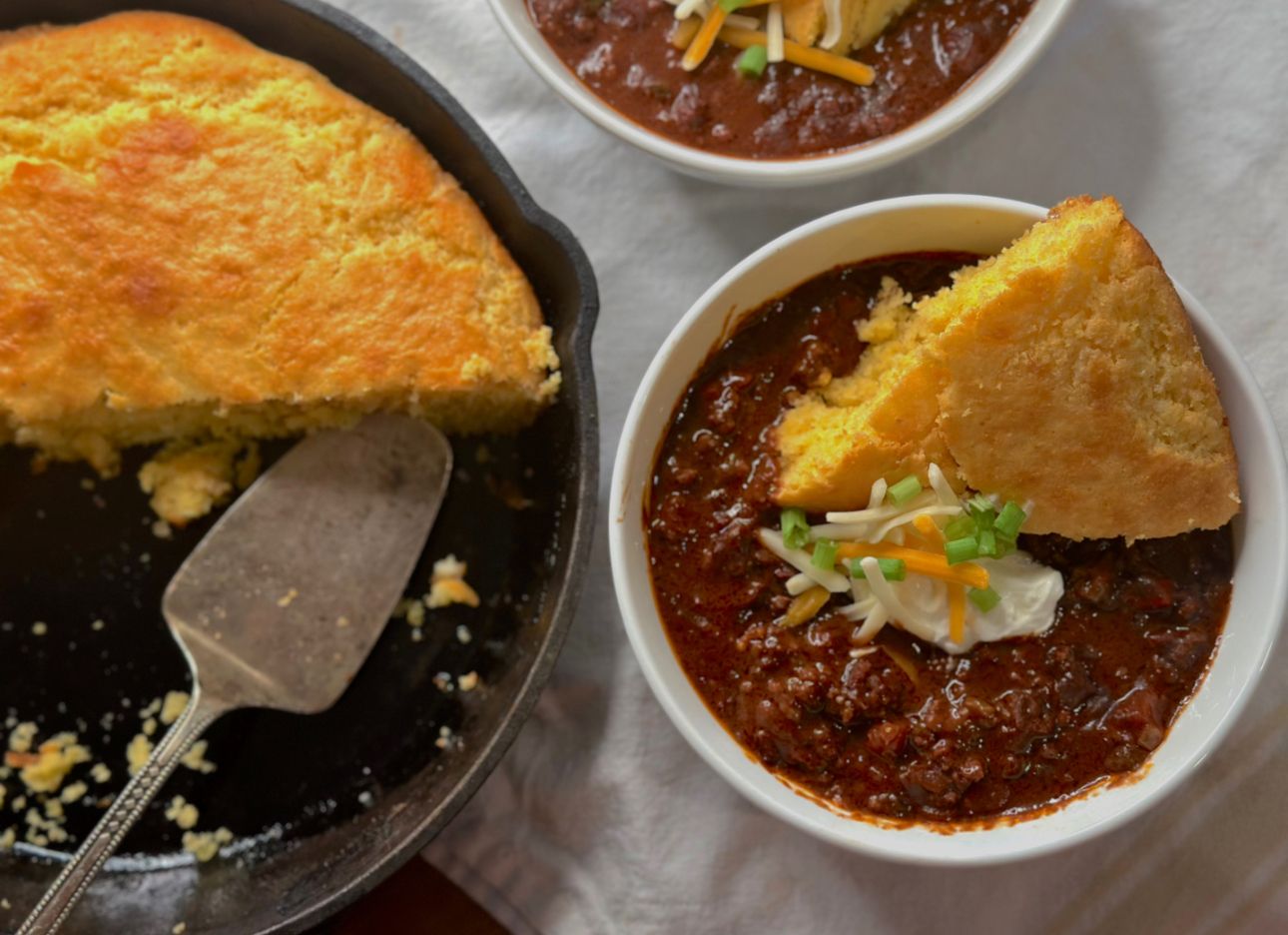
@BrittanyKhamille
Food Science Tips:
Chicken thighs stay moist even after 6 hours because they have more fat and connective tissue than breasts.
Beans contain starch. As they cook in liquid, some of that starch leaches out and thickens whatever they're cooking in. This is why good chili has that slightly thick, clingy consistency without needing flour or cornstarch. The slow cooker's gentle heat means the beans break down gradually without turning to mush.
You can use canned beans or dried beans here. If using dried, soak them overnight first. Unsoaked dried beans can stay hard and crunchy even after 6 hours
This is the one that you shred and eat six different ways throughout the week. Tacos Tuesday. Burrito bowls Wednesday. Quesadillas Thursday. Nachos Friday. Straight out of the container Saturday at 2pm because you're hungry and it's right there.

@Cibsandibus
Pork shoulder is riddled with fat and connective tissue. It's cheap because it's tough. After 8-10 hours at low heat, all that collagen converts to gelatin and the fat renders, leaving you with meat that's so tender it shreds if you breathe on it. The citrus juices add brightness and help break down the meat (acids denature proteins, which is why marinades tenderize).
Tip: Pork shoulder is sold bone-in or boneless. Either works. Bone-in has slightly more flavor (the bone adds gelatin to the braising liquid) but boneless is easier to deal with.
Bonus tip: Try broiling it at the end for added flavor and texture!
What Slow Cooker Should You Actually Buy?
Let's talk equipment because not all slow cookers are created equal.
The Classic Crock-Pot (7-quart): Cost: $65 (on SALE for $39)
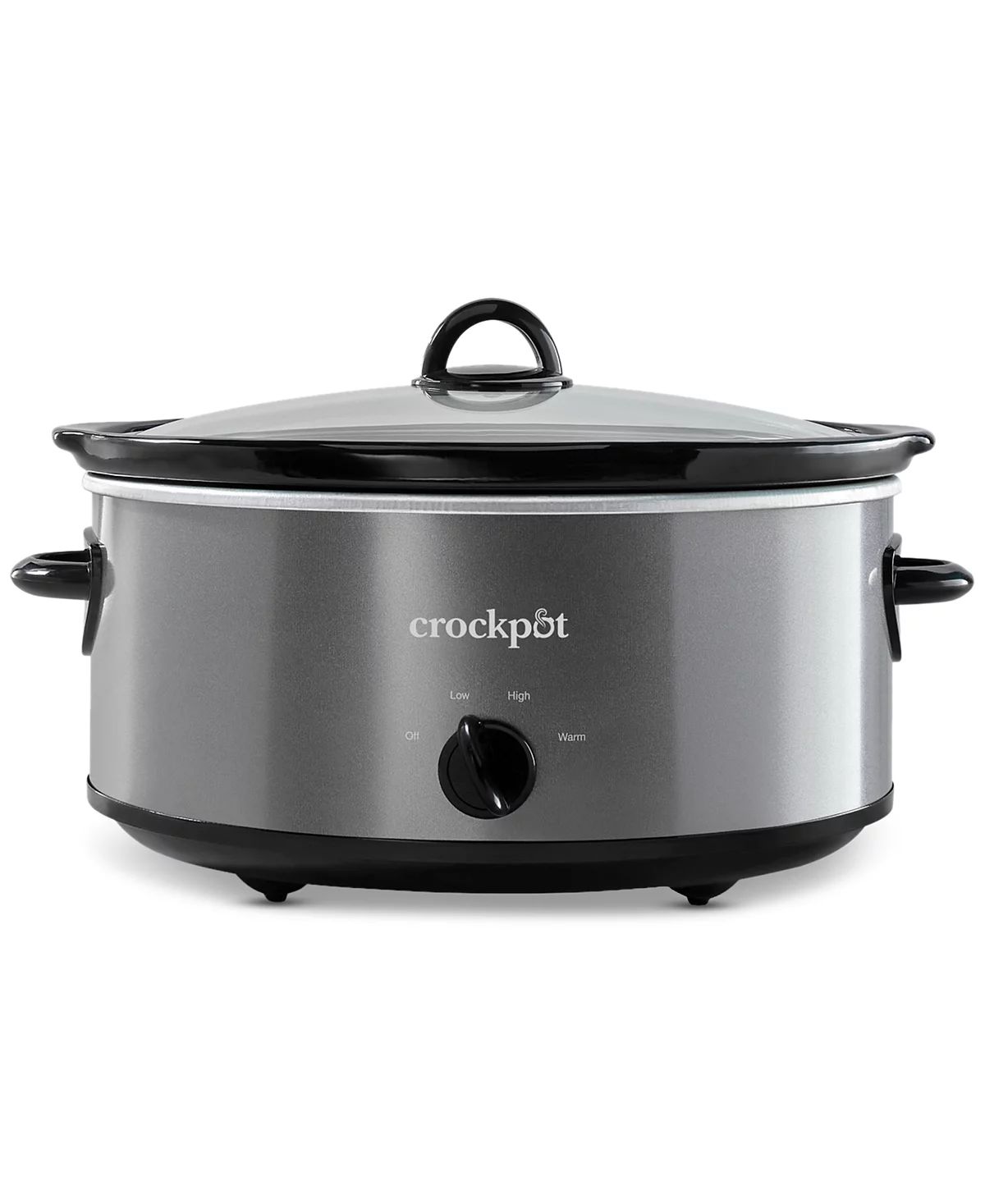
This is the standard. It's what your mom has. Oval shape fits roasts better than round.
The Instant Pot 4 in 1 Multicooker (7.5 quart): Cost: $90 (on SALE for $60)
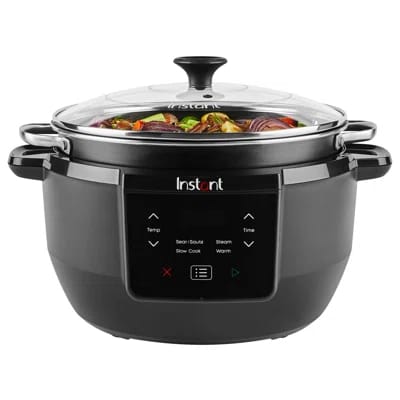
This is a pressure cooker that also has a slow cooker setting. Great if you want one device that does multiple things.
The Ninja Foodi Possible Cooker PRO: Cost: $170 (on SALE $130)

This is the machine that does it all. It allows you to sear, brown, sauté or steam directly in the pot before slow-cooking and has sous vide, braising, proofing and baking capabilities.

Has a probe you insert in the meat. When it reaches temperature, the slow cooker automatically switches to warm. This prevents overcooking. If you're paranoid about timing, this one is perfect.
Xx,
Saanya